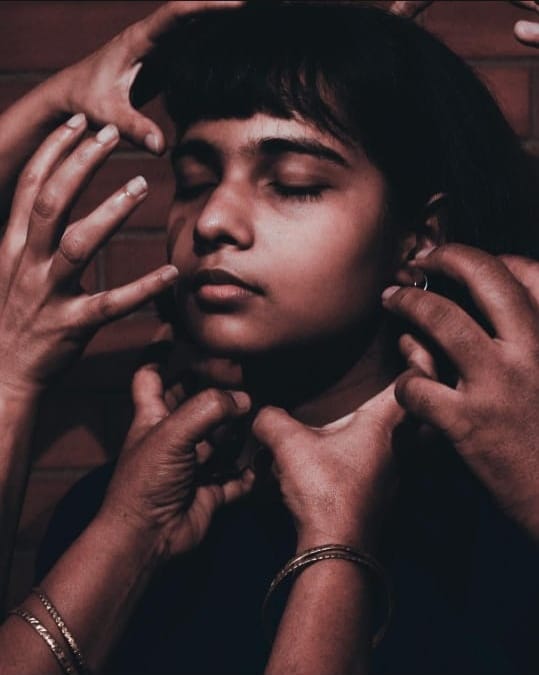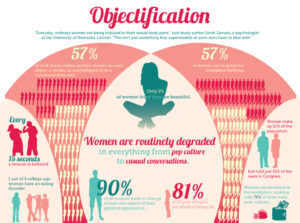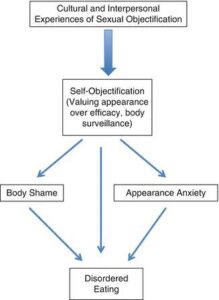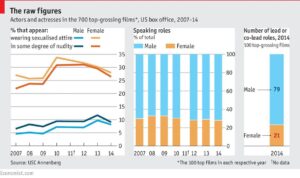
TRIGGER WARNING: Mentions of Sexual Harrassment and Sexual Violence
Gender-based abuse on the internet is a reality today. In the name of freedom of expression, perpetrators of violation of online privacy are indulging in infelicitous behaviour. A rampant number of cases of highly inappropriate content is being reported daily, but what’s even more concerning is the hike in the number of cases that go unreported. Media today is continually contributing to harmful gender stereotypes against women and young girls, where they are objectified, and their bodies hypersexualised.
The nature of media discourse allows a delineation of the social construction of reality. Social media sets a standard for what society considers “normal”. It’s meant to show the larger reality of society to its consumers. However, it is unfortunate to see that the media operates in a way that promotes sexualisation and objectification of female bodies today, among other forms of misconduct.
Researchers at Wesleyan University—while studying print media—found that on average, across 58 different magazines, 51.8% of advertisements that featured women portrayed them as sex objects. However, when women appeared in advertisements in men’s magazines, they were objectified 76% of the time.

Not only does this phenomenon in social media impose sexuality on young girls implicitly and explicitly, but it is also responsible for the increasing rate of sexual violence in India. Every 10 minutes, somewhere in the world, an adolescent girl dies as a result of violence. Nearly one in five girls is sexually abused at least once in her life.
What’s unfortunate to note here is that social media—what a common user might deem as a safer space—is only adding to this narrative.
Psychological Impact on Victims
Social media has made it easier to explore and exploit every shade of desire, consequently making the victims more vulnerable to unsolicited comments and advances. The people handling such content on these platforms believe that they are not doing any real harm, and their work is just a “normal” thing. However, the victims tell an entirely different story.
The women who fall prey to this derogatory practice suffer from severe anxiety. They keep anticipating the consequences of being just “one search away”. The narrow-minded society acts as a catalyst in deteriorating their mental health. From labelling them as ‘sluts’ and ‘wh**es’ to twisting their stories so that their trauma feels like a full-fledged drama—they leave no table unturned in demonising the already helpless. It renders an extremely unsafe and unhealthy living environment. With all sorts of lewd comments and rape threats piling up on their social media accounts, they live in perpetual fear of being exploited even when they undergo society’s scrutiny. From this prolonged shame and stress, women are plunged into severe mental health diseases.
Constant objectification creates a stream of anxiety-triggering experiences, which leads women to divert a part of their concentration on their physical appearance and safety at all times to perceive others’ actions. This becomes a huge hurdle in their career, sabotaging their self-esteem, will-power and productivity in workplaces.
There is a psychological impact on women around the world who witness this sort of objectification as well. It creates an uncomfortable atmosphere after knowing the deep and disgusting thoughts of some people spilt all over the social media platforms. This might even lead to Body Dysmorphia, or give rise to eating disorders.
Explanation of the Current Scenario in India Concerning Kerala
Although India is brimming with such patriarchal and vulgar content on social platforms like Instagram, Kerala has witnessed a peculiar surge in their numbers in recent days. In 2020, there were approximately 1479 rape cases and 3190 molestation cases reported in the state. The creators of these pages provide pornographic images and videos of women who are clearly oblivious to this process of maligning their existence. They also believe that they are hilarious after making and sharing “memes” promoting and normalising rape culture.
In a lot of their posts, they have morphed reputed actresses’ faces into indecent pictures. People criticise how these “jokes” not only defame prominent personalities but also promote sexual abuse. This creates a notion in the minds of people who feed on such a garbage heap of content that if they find it amusing, no consent is required from women, especially if they are in the entertainment sector.
What Drives Female Objectification?
Narrowing it down to a more schematic definition, objectification is the viewing of another person as an instrument to fulfil sexual goals. Viewing another person as an object—or rather less than human—is the act of neglecting the person’s cognitive abilities and moral values. In a country which has established a patriarchal culture over thousands of years, objectification of women is highly normalised. The core of feminism fights for the destruction of this very social construct. The same people who perpetrate the act of victim-blaming and call out women for “provocative” dressing are the ones who drive the wagon backwards.

The commodification of childhood and commercialisation of sexuality is more problematic today than ever. In order to make money off of hypersexualised female bodies, it’s often seen that admins of social media pages unethically morph pictures in inappropriate situations. The sexualisation of girls within consumer culture drives certain people to create content trespassing social boundaries to make money.
The messages delivered by the adult pages on Instagram perpetrate sexual violence in the disguise of humour. Violation of consent is not funny. Vandalising female stories and achievements to suit your interests is not amusing. Catcalling, stalking, and harassment are crimes, and the offender must be held accountable.
Whatever the driving factor maybe, what’s of primary importance to understand here is that the existence of this culture of reducing women to just sexual objects not only has impacts on the mental health of these women but also deprives them of the space to develop autonomous sexuality. Women start looking at themselves only as the recipients of men’s sexual activity. Bodily adornment with the aim of increasing sexual attractiveness and the need to look at themselves through the lens of commercialised beauty standards take over the minds of young girls—this is what is known as self-sexualisation. This is not only a violation of childhood and womanhood, but also calls for increased protection of individual children as well as childhood in its entirety.
The solution is not to distance children from the idea of sexuality but to work towards creating a culture in which sex can be discussed openly; where objectification, exploitation, and abuse play no part in sexual relations. The sexual utopia may seem distant, but it can be made more tangible for young minds by creating an open and interactive environment for them. What they need is a comprehensive idea of sexuality for what it is. Sexualisation and objectification will then be easier to defeat.
Sources: discoversociety.org/, www.unicefusa.org, www.womensrepublic.net, www.apa.org, keralapolice.gov.in, wp.nyu.edu, www.ncbi.nlm.nih.gov
Written by Radhika Taneja and Shranya Shrivastava for MTTN
Edited by Alankriti Singh for MTTN
Featured Image by Ishika Somani and Naman Ohri for MTTN


Leave a Reply
You must be logged in to post a comment.